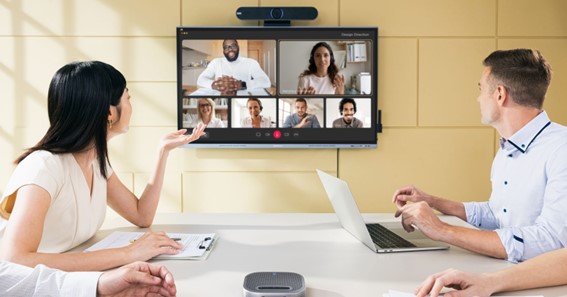Video conferencing is a great way to engage remote employees and connect teams across offices. It can also create an office culture in which everyone feels a part of the team.
But the proper hardware is essential for this technology to deliver. It must be simple, compatible, and easy to manage.
Simple and Compatible
As the number of remote workers increases, video conferencing becomes essential for communicating and collaborating. But without the proper hardware, hybrid meetings can be a disaster.
The quality of the video can dramatically impact the overall experience, especially when employees are working with clients or prospects. The quality of your camera is an essential factor to consider when selecting video conferencing hardware for your business.
A high-quality, pixel-free video quality is crucial for professional business use. This isn’t your average Skype call, and if you’re working with clients or prospects, you want to ensure they can see you.
High-Quality Cameras
A high-quality camera can help you maximize the benefits of videoconferencing hardware. For example, excellent qualities like Neat n ensure that you can see the face of a participant clearly, and they can also provide you with audio quality that meets your needs.
The quality of a camera can be determined by the resolution and field of view (FOV). For example, a wide FOV is necessary for recording multiple participants in a room.
You can choose from a variety of webcams that are designed specifically for video conferencing. These devices often include a microphone and can be used to record interviews or video calls with friends or colleagues. They can also be helpful for remote work.
Click here – Why Choose Saint Lucia as Your Ultimate Immigration Destination?
Headphones
Headphones are a popular way to block out noise while focusing on work. They’re a good choice for busy workers who need to stay focused, but they can also impede organic collaboration and interfere with other people’s conversations.
According to a recent study, headphones are used by over half of people in some industries to avoid talking to their coworkers. This may be because of their perceived effectiveness as conversation blockers, but it also reflects the need for privacy in modern open-office work environments.
For businesses with a remote workforce, video conferencing is an excellent option for team communication. It’s inexpensive, flexible, and can help improve employee retention. Plus, it helps companies meet with clients and customers anywhere they live, which can save money and energy in the long run.
Digital Whiteboards
When remote workers and teams can connect to videoconferencing hardware, they have a more interactive collaboration tool. They can add files, images, documents, screenshots, and sticky notes and work in real-time to get the job done.
Digital whiteboards are ideal for organizing ideas in a shared space for quick feedback and action planning. Features like tagging, color, and voting results make organizing ideas quickly and synthesizing them into detailed action plans easy.
They can be used for meetings, brainstorming sessions, or classrooms. Educators use them to engage students and facilitate discussion, group work, and a sense of community.
High-Speed Internet
Internet connectivity is necessary for maximizing the benefits of videoconferencing hardware for remote work and collaboration. It’s essential for avoiding dropped calls, audio delays, and poor video quality.
To keep up with the growing number of employees working from home, businesses need fast, reliable Internet. The right Internet speed can save your team time and money, increase productivity, and allow you to make real-time business decisions.
To ensure you have the bandwidth necessary for your videoconferencing needs, choose an Internet plan with download and upload speeds at least equal to the requirements of your videoconferencing application. You should also test your connection stability to ensure it’s not jittery or lagging.
